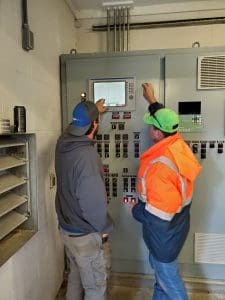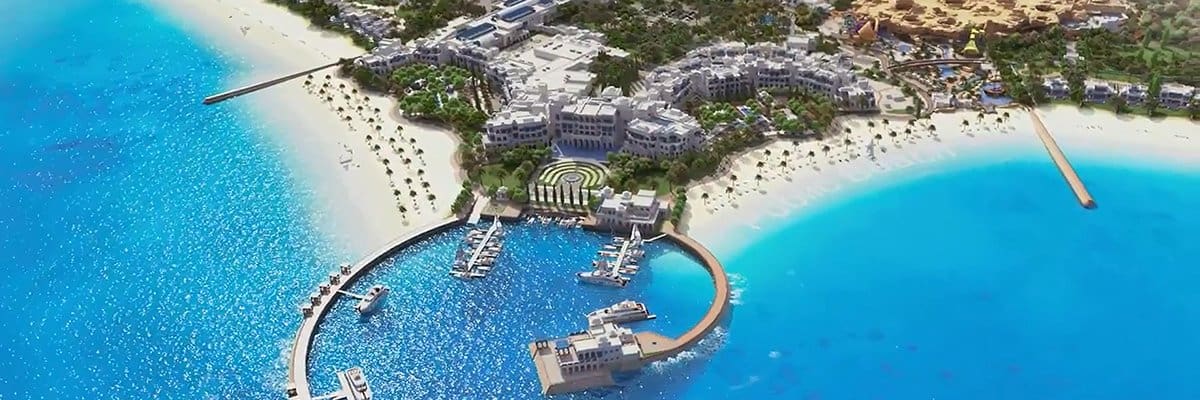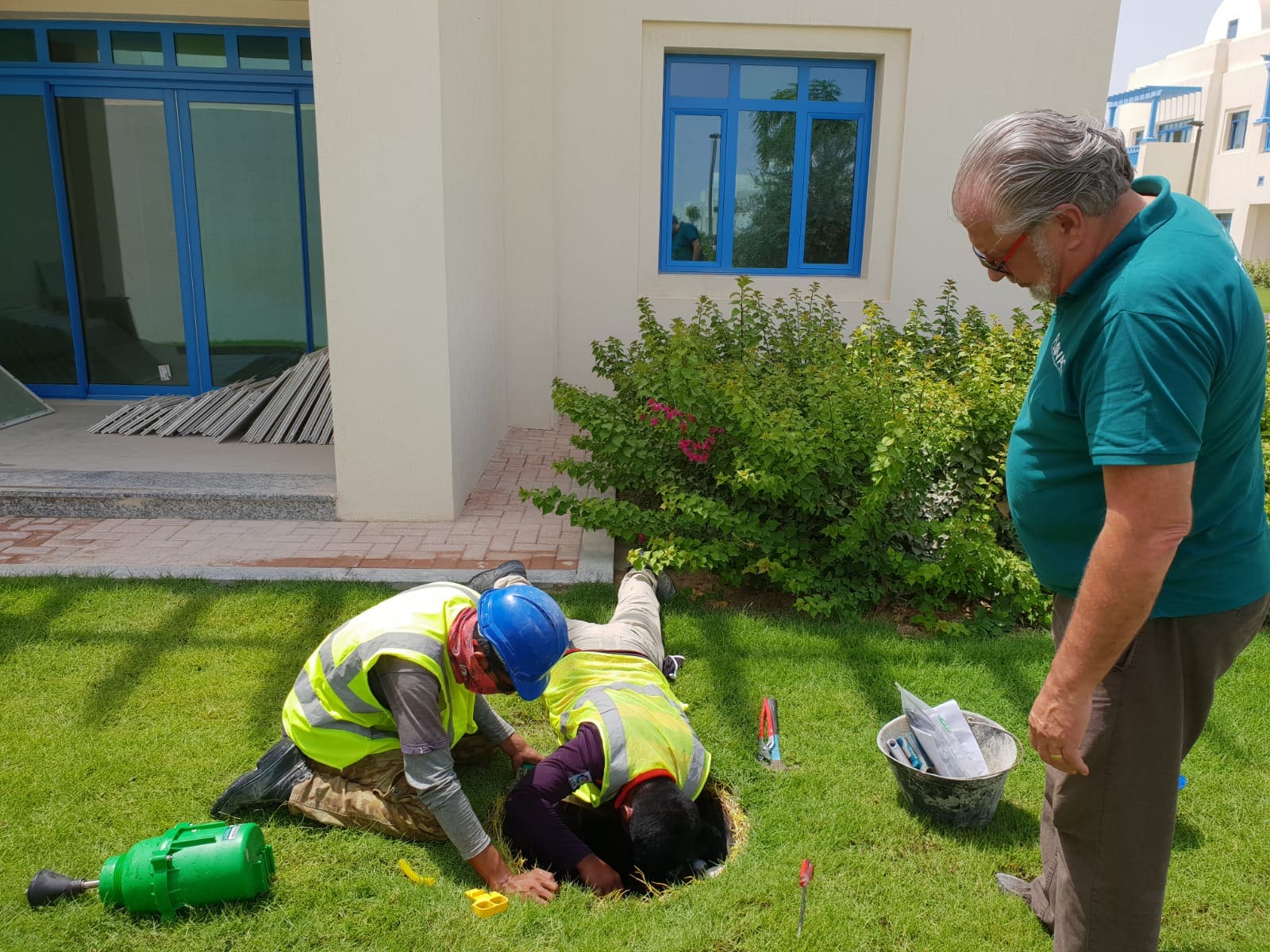Is Infiltration Causing Problems in Your Sewerage System?
/0 Comments/in Operations, Projects/by admin Not long after Miles Crossing Sanitary Sewer District in Oregon installed a new vacuum sewer system they realized they had an issue that needed an immediate fix. According to the superintendent, Carl Gifford, “Our flows exceed 180,000 gallons [on heavy rain days] due to a massive I/I issue that we grew to have”. This excess can put a strain on the system which can increase utility bills, not to mention, Miles Crossing is a collection system only. They have to work with a neighboring system for treatment and have a limit on max flow that can be sent.
Not long after Miles Crossing Sanitary Sewer District in Oregon installed a new vacuum sewer system they realized they had an issue that needed an immediate fix. According to the superintendent, Carl Gifford, “Our flows exceed 180,000 gallons [on heavy rain days] due to a massive I/I issue that we grew to have”. This excess can put a strain on the system which can increase utility bills, not to mention, Miles Crossing is a collection system only. They have to work with a neighboring system for treatment and have a limit on max flow that can be sent.
Flovac and Miles Crossing were able to meet and come up with a plan to utilize Flovac Monitoring System to overcome these issues.
“With this system, we can monitor the fires from each individual pit. During a rain event, it is really simple to tell which ones contribute to the massive I/I we are dealing with. During the last winter, we were able to identify 9 sources of I/I that we were able to repair”.
Gifford also mentions how the system allows for the sewer district to know about problems before customers do. “An additional benefit that we observed with this system is the alarms that it provided. Numerous times we were called out for a high-level at a residence and were able to make the repair and get it back online before the customer knew there was a problem. This helps greatly with the risk management of possible failures and the following lawsuits that have happened in the past”.
Due to less load on the system, Miles Crossing have been able to add residential connections creating revenue.
To find out more about the Flovac Monitoring System – Click Here
Image on Front Cover Torsten Blackwood—AFP/Getty Images
Flovac Protecting the Environment in Barcelona
/0 Comments/in Marinas and Ports, Projects/by adminFlovac was in charge of the design and installation of a Flovac vacuum sewerage system at the MB92 Port of Barcelona expansion project to collect wastewater and ensure that no environmental damage could occur in the area.
MB92 expands its installations at Barcelona’s port

Marina Barcelona 92 (MB92), a company dedicated to the maintenance and repair of superyachts, was in charge of carrying out the ambitious project to expand the port coastline of Barcelona, in the Port Vell area. The project, started in 2015 and completed in 2019, consisted of the construction of a large surface area in which a new boat lifting system (known as shiplift) would be located, with the aim of grounding yachts of up to 4,000 tons for repair and maintenance. Currently, it is the largest shiplift in the world dedicated exclusively to yachts.
The Project
The project, which involved a total investment of 50 million euros, was completed in August 2019 after 4 years of work. Thanks to the shiplift, customers have more ability than ever to work out of the water, which offers more flexibility, capacity and opportunities when it comes to maintaining and repairing yachts. Since its launch, the shiplift has already carried 22 superyachts with an average of over 75m LOA. It is a feat of world-class civil engineering in the heart of the port of Barcelona.

Raising Capacity
- Capacity to lift vessels up to 115m LOA.
- 30,000m2 hard standing area to host up to 9 vessels of up to 115m LOA on dry land
- Hard standing area includes integrated keel pit with dimensions of 8m depth, 5m width and 14.5m length.
- Bidirectional rail system to facilitate flexible and more efficient maneuverability of vessels once hauled out.
- Supply of all essential services such as fresh water and shore power connections.
Flovac Looking after the Environment
Flovac was commissioned to install a vacuum sewerage system in this project in order to collect the wastewater generated by MB92’s activity. The goal of Flovac and the products it offers is to reduce the human footprint. Therefore, one of the main priorities was to guarantee the environmental protection of the area. The installation is made up of 2 independent vacuum networks; one for the wastewater from buildings and yachts, and the other one for industrial wastewater produced from yacht repair. The industrial wastewater is transported to a new treatment plant, at MB92’s own facilities. The facility has 4 tanks with 2 vacuum valves each. Flovac has finished the commissioning this July.
To find out more about Flovac’s port and marina projects you can click here
Flovac’s First Project in Botswana
/0 Comments/in Projects, Septic to Sewer Replacement Program/by adminA Flovac vacuum sewerage system has been installed at the site of one of Africa’s most important infrastructure projects, funded by the African Development Fund.

Kazungula Bridge Connecting Countries
The Kazungula Bridge project which is connecting Zambia and Botswana over the Zambezi River will be a 40{1deaea03afbf3f3fb2d45caffee157f5a0ec73dd837732cad8f5061c47eb75db} boost to the GDP of the countries involved as it opens up the regions for trade all the way to the port at Durban.
The Kazungula Bridge is located at the only area in the world where 4 countries meet together. Zambia, Botswana, Namibia and Zimbabwe. One of the Seven Natural Wonders of the World, the Victoria Falls is located a short 1 hour drive from the project.
As the new Bridge opens up trade and tourism between the four countries it was necessary to set up a new border customs and immigration complex. Zhong Gan, an experienced International engineering and construction company based in Botswana, has done numerous projects for the World Bank and Botswana Government and decided to use a Flovac vacuum sewerage system on this project which services this complex.
Justin Peng the project director of Zhong Gan chose a vacuum sewer as a value engineering proposal to the client as there was a high water table which prevented deep excavations required by the original gravity system proposed. Ensuring that no sewage could overflow to the Zambezi River was also important as the area is home to elephants and others in Africas Big 5.

Installing a Flovac Collection Pit and Valve
Smart Vacuum Sewer System
The Flovac system is the first smart sewer system installed in Botswana which allows the operator to have a complete system overview. The smart system allows the operator to look at the performance of each vacuum valve in the system and independently alert operators to any potential problems.
Mr Peng chose Flovac due to the operator friendly nature of the design and equipment and the overwhelming positive feedback from prior installations that his team visited. The Water Utilities Corporation approved the system who were extremely pleased by the advancement in technology and ease of maintenance compared to other systems that had been installed in Botswana and Southern Africa.
The Flovac Team worked very closely with our local representatives Multi Waste Pty Limited headed by Andrew Davies. Multi Waste are a large domestic company , experts in water, wastewater and energy in Botswana and Southern Africa. Multi waste set up a fabrication plant for the Flovac pits and handled all assembly of the system at their head office in Gaborone prior to delivery to site.
The Multi Waste team will operate and maintain the system for the time being with support from the Flovac International Operations Group via the monitoring system.

The Flovac and Multi Waste Design and Install team


Why Hilton Resorts chose a Flovac Vacuum Sewerage System
/0 Comments/in Developer Projects, Projects/by adminThe Hilton Salwa Resort is designed to become one of the largest resorts and residential projects in Qatar. Utilizing a Flovac vacuum sewer system the resort is constructed on 257 acres of land in the Salwa area. The beach resort and villas is a massive project that includes a water park, marina, dive center, cinemas, pools, a health club, spa and a considerable retail space. In addition to the rooms and suites in the main hotel building, the resort will also include two small “villages” of family villas. (Hilton Hotels announcement)

Hilton Salwa Beach Resort and Villas
 Flovac was asked to design and supply a vacuum system that would be able to handle the high flows that will ultimately be handled by the Resort. The vacuum system needed to facilitate not only the hotel but also residential areas, restaurants and the marina. The client was aware of the good work which Flovac had done at Reef Island in Bahrain (Read Here) and was particularly impressed with the monitoring system that had been installed.
Flovac was asked to design and supply a vacuum system that would be able to handle the high flows that will ultimately be handled by the Resort. The vacuum system needed to facilitate not only the hotel but also residential areas, restaurants and the marina. The client was aware of the good work which Flovac had done at Reef Island in Bahrain (Read Here) and was particularly impressed with the monitoring system that had been installed.
The monitoring allows operators to see exactly what was happening anywhere in the network including the operation of the vacuum pump station. Mr Willem Gooren one of the founders of Flovac managed the project and was based in the Middle East for extensive periods during the projects establishment and finalization.
Smart and Safe Installation
In sandy soils, especially areas where there is a high water table vacuum systems are ideal as all of the pipework is installed at a shallow depth in the ground. A stepped profile within the pipeline design allows for some utilization of gravity while keeping the pipe shallow.
Installation of vacuum mains is a lot faster than the installation of gravity sewers as there is less requirement to de-water or pre-load the land. HDPE pipe is used often when installing in hot climates and where soil conditions are unstable.
Leak Proof
The use of a Flovac system was also important to ensure that there would be no potential leaks from the system. As all vacuum pipework is under a negative pressure sewage cannot leak from the pipe in the event of a break.
The Vacuum Pump Station is one of the largest stations in the world. Housed in a dry and air conditioned environment the two large collection tanks are connected to five large Busch Mink MM 1202 vacuum pumps. Flovac has used Mink pumps since before 2005 and so has great experience in the correct set up to maximize the ability to handle the large flows required in this project.




Sydney Superyacht Marina gets a Flovac Makeover
/0 Comments/in Marinas and Ports, Projects/by admin
Clemens Overdijk – Marina Manager at the Sydney Superyacht Marina
Sydney Superyacht Marina Sewage Pump Out System Upgrade
This standout marina was first built in the late nineties to accommodate visitors to the 2000 Sydney Olympics. Since that time, not only have the yachts gotten bigger but the requirements of many of the yacht owners have reached the point where a number of upgrades to facilities are required. Clemens Overdijk, the Marina Manager since 2016 has been very interested in ensuring that their customers get the best experience possible.
One aspect that is very important to many yacht owners is the ability to quickly and cleanly discharge any wastewater from their vessels. No one wants leaks or the risk of overflows, or odours and importantly no one wants to spend hours tied up discharging wastewater. Or even worse needing to go to a different marina to discharge. There are many smaller marinas now unable to handle the size of the tanks, or the depth of the yachts, causing them to go elsewhere, at quite a cost. An important bonus for the yacht owners is that each berth offers a direct connection to the vacuum system.
Clemens looked at a variety of solutions from around the world and found that Flovac, a local company, was doing large scale marina sewage systems at a number of large marinas around the world and catering to the largest of yachts. These included projects in Barcelona, Spain, Italy and Greece, home of the superyachts.
Remote Activation of Pumps
One aspect of the work that Flovac had been doing around the world was in the technology space. Flovac has pioneered the use of IOT (Internet of Things) technologies to enable remote

New Pump Station Upgrade and touch screen application
troubleshooting of the system as well as remote operation of the system. Many existing pump out systems require the yacht manager to locate the pump station, turn it on manually (if it is working), go back to their yacht to start the operation which may take many hours to complete. If someone else is using it, or if there is a problem, it may well affect the ability of the yacht to get back into action in a timely manner. Flovac has developed an app for the phone, which the yacht owner can log into from the comfort of his or her yacht. At a glance they can see if the facility is available. Couple the yacht to the access port, push start on the phone and discharge the wastewater.
System Success
The very first yacht that tried out the new system was a new 65m superyacht, one of the larger yachts at the marina. They had experienced a lot of difficulty with the old system, often having to go to a different marina altogether as the system could not handle receiving pumped flows. With the new system, the 6,000 litre discharge took less than an hour and a “smooth operation”for all involved. Telling our operator and other boat owners that this was the best system that they had come across in Australia.
The “significant investment” that required securing the best system has now become part of the key features of the marina that gives captains the confidence that SSM can meet their requirements.

Sydney Superyacht Marina
For an overview of the Sydney Superyacht Marina you can view that here
Engineered Solutions. Flovac Launches New 2 inch Vacuum Valve
/0 Comments/in Products/by admin
Early vacuum sewerage systems are about to get a makeover thanks to the Flovac R&D team in conjunction with the Production team in The Netherlands. Clients from many parts of the world had struggled with getting reliable and easy to use vacuum valves to fit the earliest vacuum systems installed in the 1960’s and 1970’s.
Joel Lillienthal, the pioneer of modern vacuum systems granted early patents to Electrolux for the development of the vacuum sewerage industry in the early 1960’s. Those systems were developed using 2-inch (50 mm) vacuum valves as many were used for just grey water, marine applications and single house applications. Modern vacuum systems all use 3-inch or 90 mm vacuum vales and this is a requirement under most standards.
The 2-inch valves that were installed in many of those early projects used a membrane type valve and an old fashioned ball float controller, similar to what was used in old toilet cisterns. Both the membrane valve and ball float increased operational problems in these systems as did the smaller 2-inch size of the valve. As most plumbing fixtures within the house had a 3-inch clearance the vacuum valve became a choke point.
The development and use of 3-inch valves in the 1970’s reduced the rate of blockages and vast improvements to the technology in the years since have meant that vacuum sewers are the preferred alternate sewage system in many countries. Sadly most of these early vacuum sewers had corresponding size issues with smaller diameter pipes and small diameter collection pits for holding the vacuum valves. This meant that it was often impossible to replace the existing valves with modern larger ones.
Although there are still many hundreds of vacuum systems left from the sixties which are still working, they do have high operational costs and problems can be difficult to find. This has caused some anxiety around vacuum technology in area’s where these systems still exist.
2-Inch Valve Improvements
Flovac’s production team have been working for some time on developing a 2-inch valve to help out numerous clients from around the world. What clients had asked for was something that was

New Flovac 2-inch valve
very similar to our 3-inch valve. You can read about all the benefits of the Flovac 3-inch ( 90 mm valve) here. Clients felt that it was the best valve and controller in the market and wanted as many of the same attributes as possible. What has been developed is very similar and includes the ability to unscrew the top half of the valve from the bottom without using any equipment. The controller also has a quick release key. The internal free ball passage of the FLOVAC 2-inch interface valve is with 55 mm the biggest free ball passage in the existing market. This with the self-cleansing extra wide Y-body, results in higher efficiency and less chance of blockages.
Valve Monitoring Option
As an addition they have managed to make it compatible with either the cable or wireless monitoring systems. A 2-inch valve is always going to be more susceptible to blockages so getting an alert when one occurs and in which valve it is occurring will cut down operational time considerably. Another very important reason for the use of monitoring with these old systems is that many suffer from infiltration from groundwater and stormwater. Some of these systems are now 50 years old, pipes and pits are cracking and breaking. Monitoring makes it possible to target specific areas for rectification, taking away the guesswork.
Grey Water Systems
The new Flovac-2 inch valve has not been developed for use in modern municipal system as only 3-inch valves should be used in residential area’s. One area that the 2-inch valve might find a market though is for when we do grey water only systems or smaller indoor systems. Grey water systems do not have solids and so there is little to no risk of blockages.

Flovac 2-inch valve with Grey Water Box
Please contact your closest Flovac office if you would like more information about the 2 inch valve. It will be on display at the worlds largest water industry expo at IFAT in Munich in May 2020.
Helping Hurricane affected communities in the Caribbean
/0 Comments/in Projects, Septic to Sewer Replacement Program/by adminWhen Hurricane Irma wreaked havoc through the Caribbean Islands in 2017 leaving a trail of destruction, it was clear that many towns would need to be completely rebuild many of their buildings but also their water and sewage infrastructure.
Having already been engaged in other Caribbean countries to install Flovac vacuum sewerage systems the engineers in Grand Case on Saint Martin approached Flovac to see if a vacuum sewerage system would be the best technology for the island.
This area is very flat and has a high water table, which meant that you could not dig more than one meter without finding salt water that would damage a system using gravity piping networks. Until now Grand Case had a network based on septic tanks that was not adequate. After the damage caused by Hurricane Irma, Saint Martin needed urgent repairs and a new, more efficient sanitation system. Work began in Grand Case (Saint Martin) towards the end of 2019 and it was clear that a vacuum sewerage system was essential in the area.

Shallow Vacuum Main Installation
Often working in narrow streets with other cables and pipes already installed it was clear that a vacuum system was the only system that could be installed with the least amount of impact on the local community. The people of Saint Martin were also very happy to hear that there would be no odors from the system as well as no potential of sewer leaks from the pipes.
As the region had experienced more major storms and hurricanes in recent years it was also important that the system was resilient and would still operate during extended power outages.
Being a remote community with little experience with vacuum sewer technology the local managers and operators were very happy that Flovac installed a monitoring system throughout the network that could be watched and supported by the Flovac operations group in Europe. If there is ever a low vacuum or breakdown, Flovac’s experienced operators could assist.
The main design and installation was handled by Flovac’s project group based out of Barcelona as they had recently installed a system nearby in Canouan. This group, headed by Bruno Galindo and Francisco Rodríguez is now supporting Saint Martin’s operators.

Grand Case St Martin









